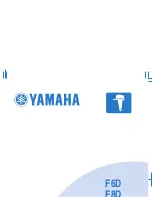
2
18
Hardware Installation
2.2 System Memory
The system board is equipped with
three 168-pin DIMM (Dual In-line
Memory Module) sockets that support
unbuffered PC-133/PC-100 SDRAM
DIMM for 133MHz/100MHz system
memory bus. PC SDRAM (Synchronous
Dynamic Random Access Memory) is a
fast memory interface technology that
uses the clock on the chip to
synchronize with the CPU clock so that
the timing of the memory chips and the
timing of the CPU are synchronized. This
saves time during transmission of data, subsequently increasing
system performance.
Refer to System Memory Frequency in the Advanced Chipset
Features section in chapter 3 for more information.
The onboard VGA shares 1MB of the system memory. This is fixed
regardless of the size of the system memory. Aside from the 1MB
shared memory, it also uses Dynamic Video Memory Technology
(DVMT). DVMT freely changes in size because graphics memory is
allocated from the system memory according to current needs. Refer
to chapter 1 for the type of memory supported by the system
board.
Warning:
Electrostatic discharge (ESD) can damage your system board,
processor, disk drives, add-in boards, and other components. Perform
the upgrade instruction procedures described at an ESD workstation
only. If such a station is not available, you can provide some ESD
protection by wearing an antistatic wrist strap and attaching it to a
metal part of the system chassis. If a wrist strap is unavailable,
establish and maintain contact with the system chassis throughout
any procedures requiring ESD protection.














































